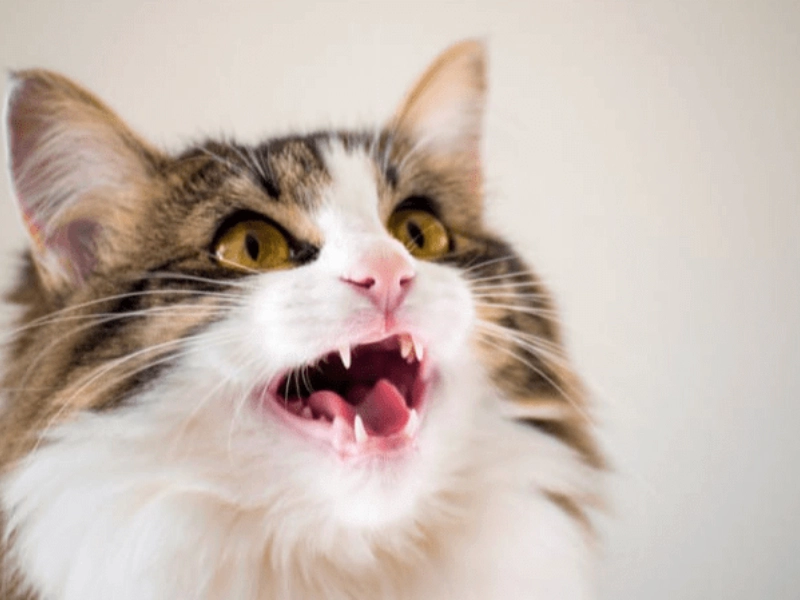5. Your Cat Is Vocalizing More Than Normal

From soft purrs to loud meows, cats are renowned for their varied spectrum of vocalizations, each of which is a means of communication with their human friends and fellow cats. Although certain breeds are naturally more vocal than others, a sudden surge in vocalization—especially if it relates to exceptionally long or frequent meows—may indicate that your cat is attempting to say something significant. This change in behavior should not be written off as simple chattiness but rather seen as a possible sign of underlying problems needing attention and, most often, professional evaluation.
A cat could suddenly start to be more noisy for many different reasons. Among the most often occurring causes is discomfort or pain. Cats, despite their reputation for stoicism, may vocalize more when they are physically uncomfortable. This could be the result of a range of health concerns, including tooth problems, arthritis, digestive issues, or more serious diseases like hyperthyroidism or kidney illness. Depending on the source of discomfort, the increased vocalization may be most apparent at night or while the cat is attempting to use the litter box, eat, or move about.
Stress and anxiety can also lead to increased vocalization in cats. Cats may become more vocal if their surroundings change—such as when they move to a new house, add a new pet or family member, or change their routine. This vocalization helps them to convey their discomfort. When a cat feels insecure or is seeking comfort from their human companions, they may meow more often. Like dementia in humans, cognitive impairments in older cats can also lead to increased vocalization, often manifesting as nightly yowling or apparent confusion.
Sometimes increased vocalization is a learned behavior. A cat may start meowing loudly or continuously over time if it receives food, access to preferred areas, or attention for this behavior. This is especially typical of cats fed on demand instead of on a set schedule. Additionally, female cats in heat will vocalize more with unique yowls to attract mates. Likewise, unaltered male cats may become more noisy in response to nearby female cats in heat.
If your cat’s vocalizing increases significantly, it’s important to pay close attention to the context and any associated behaviors. Does the vocalizing occur at particular times of day or during specific activities? Has your cat’s behavior, litter box habits, or appetite changed? These observations can offer important clues regarding the underlying cause of the increased vocalization.
Given the variety of possible causes—from medical issues to behavioral concerns—you should consult a veterinarian if your cat’s vocalization patterns change significantly. A thorough physical examination might help rule out or identify any medical conditions that could be causing the behavior. To gain a comprehensive view of your cat’s health, your veterinarian might recommend blood tests, urinalyses, or other diagnostic procedures. If medical factors are ruled out, your veterinarian may suggest behavioral modification techniques or a referral to a feline behaviorist.
In the meantime, there are ways you can support your cat’s well-being and manage increased vocalization. Ensure your cat lives in an engaging environment with plenty of opportunities for play and mental stimulation to help reduce stress and related vocalization due to boredom. Maintain a regular schedule for play, feeding, and attention to create a sense of security. If the vocalizing seems to be attention-seeking, it’s advisable not to reinforce the behavior by responding each time. Instead, try to engage your cat in play or attention when they are quiet to reward calm behavior.
In cases of cognitive impairments in elderly cats, providing a nightlight and ensuring easy access to food, water, and litter boxes can help reduce confusion and associated vocalization. If stress seems to be a factor, consider using pheromone diffusers or sprays designed to create a calming environment for cats.
Remember, your cat uses increased vocalization to signal that something in their environment has changed or that their needs aren’t being met. By paying attention to this behavior change and seeking professional help when necessary, you can ensure your cat’s well-being and strengthen your relationship with them, ultimately helping to identify and resolve potential environmental or health issues.

